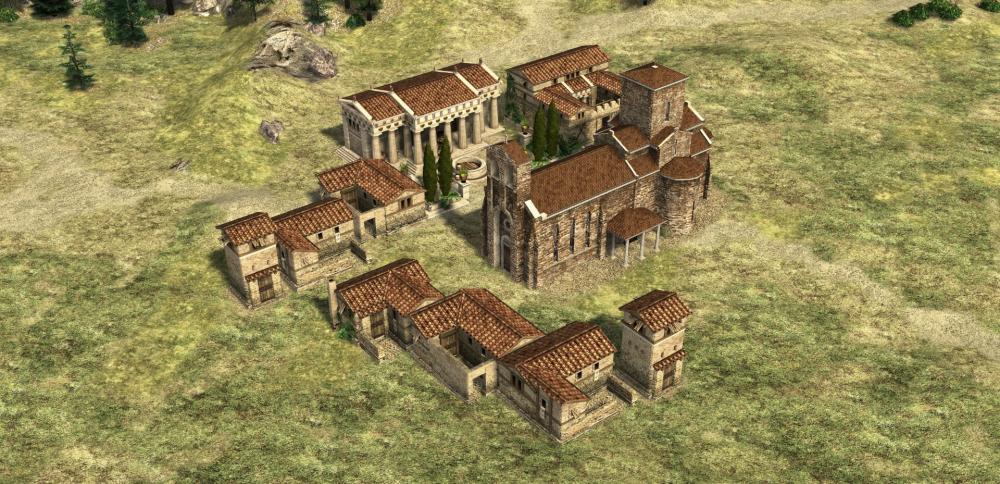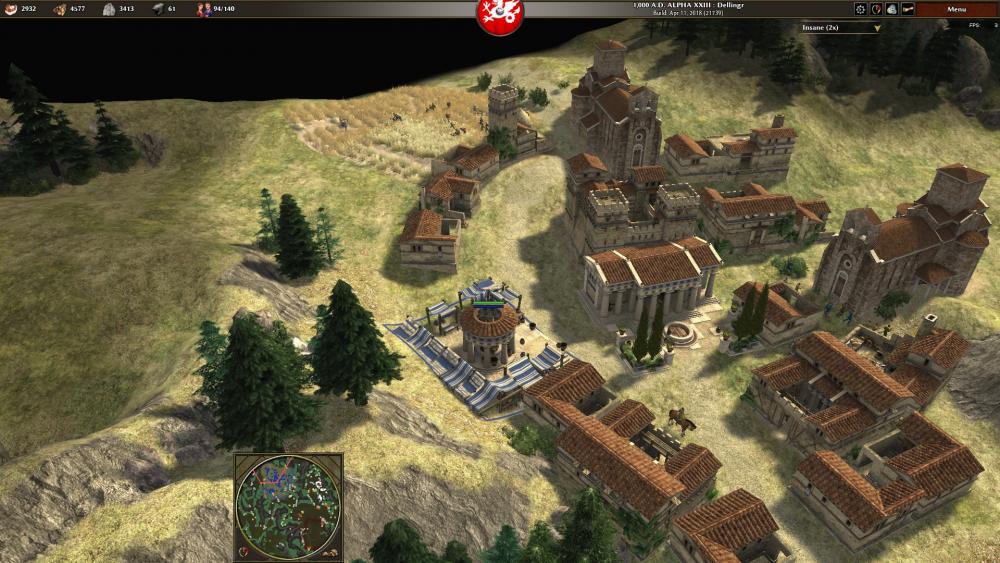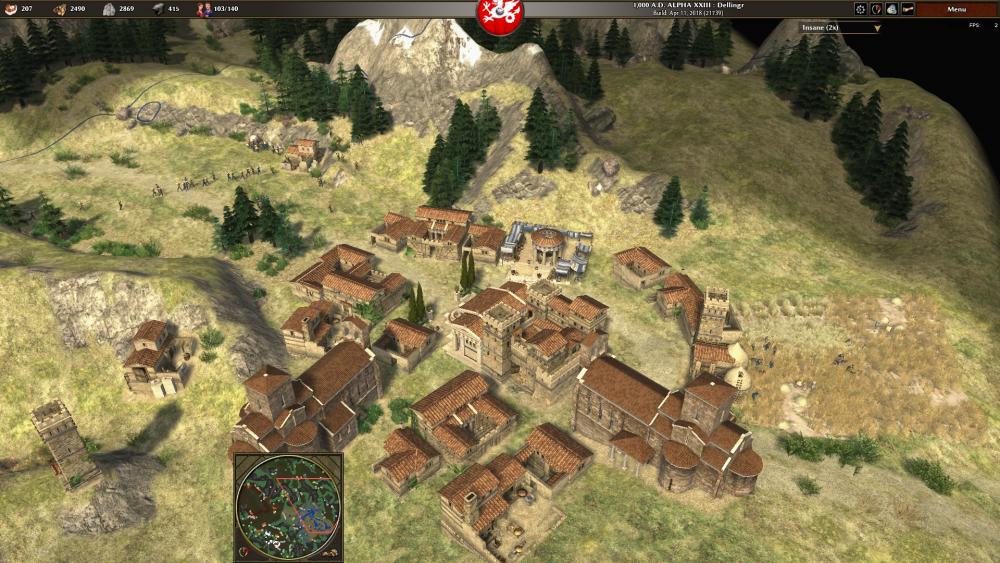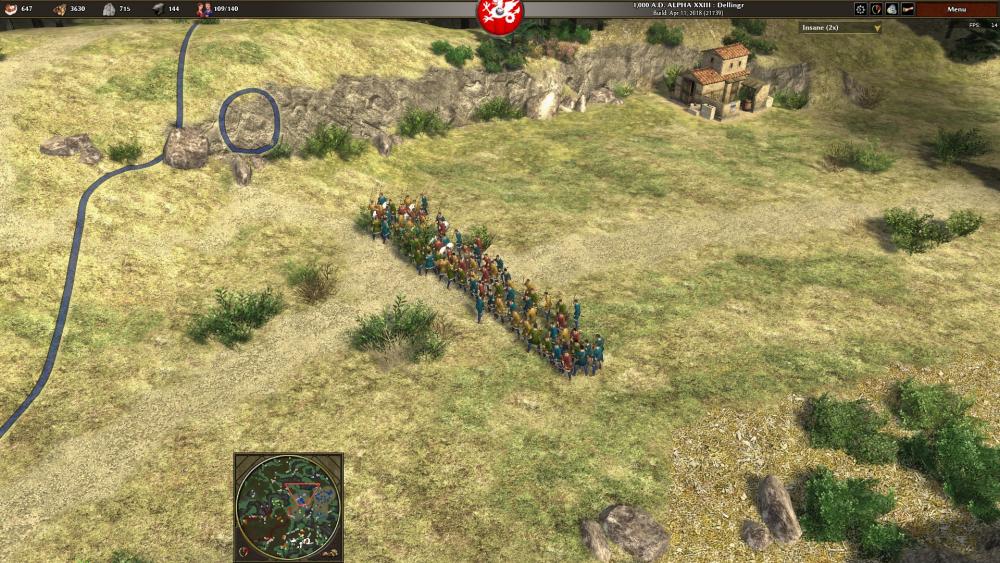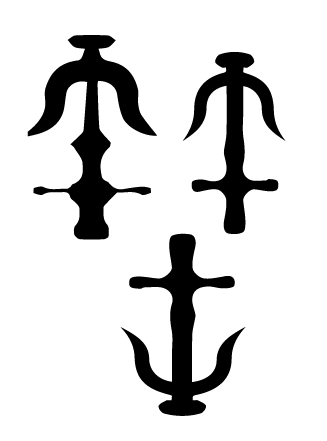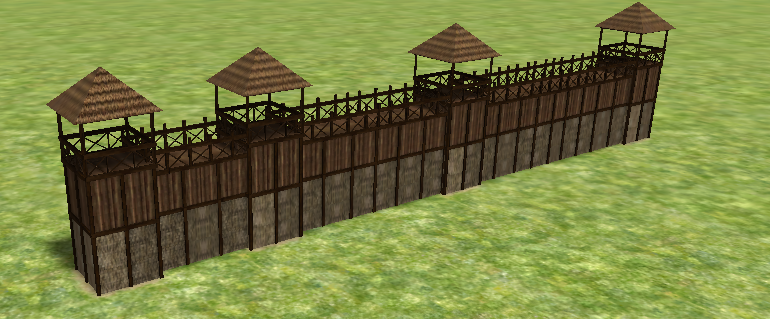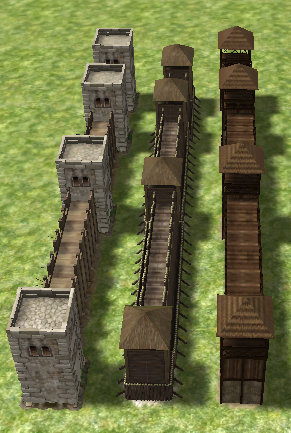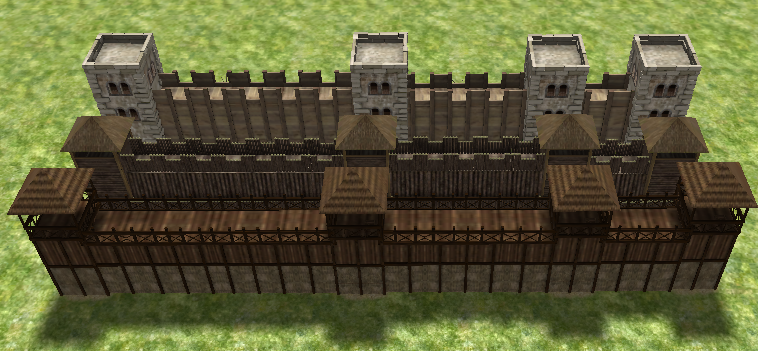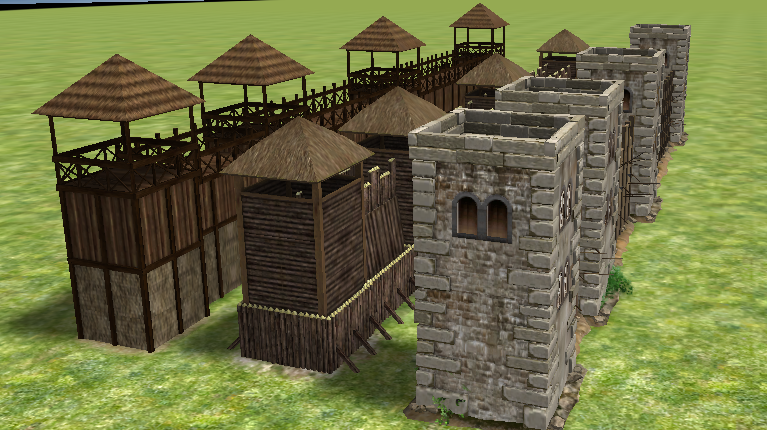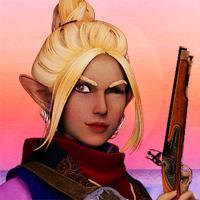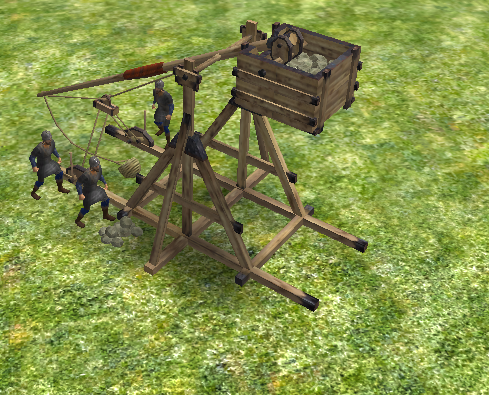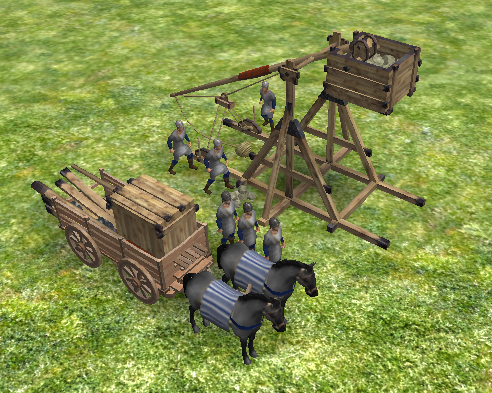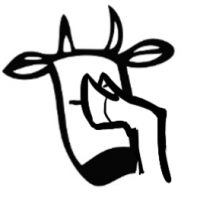Leaderboard
Popular Content
Showing content with the highest reputation on 2018-04-25 in all areas
-
I think we should be fine if we state clearly that mods that are signed are only checked for stability and security, and that doesn't mean wfg took any part in the realization of the mod. If we are facing issues, we still have control over which mods are "validated" and appear on mod.io, on top of the signature system. And of course we can also contact dbolical, who should be able to advise us in case of legal issues given their size and the amount of borderline mods they host already.6 points
-
3 points
-
To gain an understanding of the Byzantine army and its constant changes in the Medieval Age, the Army will be split into Early, Thematic and Byzantine Armies. However there are similar overlaping themes. As with most medieval armies, the majority of Byzantine soldiers were seasonal fighters (with the exception of a few professional institutions such as the Athanatoi created by the Emperor John I Tzimiskes). However, unlike the armies of Western Europe, the Byzantine army was not dependant on feudal obligations to raise large amounts of manpower but was reliant on bureaucratic system and a stable system of pay by coin and land (which was known as the theme system). This, coinciding with adapting different methods of fighting, meant it could easily field a flexible and mobile army consisting of specialised elements. Much of what we know of Byzantine warfare comes from the Byzantine military manuals- they provide us with a wealth of information on equipment, doctrines, tactics and deployment. However there is an inherit danger of readings these manuals as descriptive. Most of them, especially the Strategikon, were probably more prescriptive than descriptive in nature. https://byzantineoplomachia.wordpress.com/2015/09/09/beyond-the-golden-gate-the-byzantine-army-at-war/ Infantry Although the Strategikon describes infantrymen equipped like Late Roman heavy infantry, it is highly unlikely that most Early Byzantine heavy infantry wore metal armour. The chapters on heavy infantry in the Strategikon were copied from an earlier Late Roman military manuscripts and there is little reason to believe that the best heavy infantryman had more than a shield, cloth armour and perhaps a helmet for protection. His main offensive weapon was a spear, around six feet in length that could be thrust or cast. In the Strategikon, infantrymen were instructed to throw their spears when facing infantry and thrust their spears when facing cavalry. Behind the first ranks of spearmen, archers or javalinmen were drawn up to provide missile support. Infantry Although the Strategikon describes infantrymen equipped like Late Roman heavy infantry, it is highly unlikely that most Early Byzantine heavy infantry wore metal armour. The chapters on heavy infantry in the Strategikon were copied from an earlier Late Roman military manuscripts and there is little reason to believe that the best heavy infantryman had more than a shield, cloth armour and perhaps a helmet for protection. His main offensive weapon was a spear, around six feet in length that could be thrust or cast. In the Strategikon, infantrymen were instructed to throw their spears when facing infantry and thrust their spears when facing cavalry. Behind the first ranks of spearmen, archers or javalinmen were drawn up to provide missile support. Appearance Uniforms were probably only used by the elite of the infantry. Most infantry units were therefore distinguishable by their shield patterns and standards. Cavalry units and the best infantry were issued uniforms and equipment from the Imperial Factories- elite cavalry units are described as wearing white uniforms on parade. Colours for other units included different shades of red, greyish white, light green and light blue. Late Roman Infantry carried draco standards, while the cavalry units had either draco or vexillatio standards. By the time of Maurice, the swallow-tailed bandae flags replaced the draco and vexillatio. Like other pieces of equipment this was probably adopted from the Avars. The bandum was a simple square or a rectangular flag with two, three or four streamers, each measuring several meters in length. Units in the same division (mere) were to use the same or similar banner, and the cavalry unit’s pennons, the flammulae, were used to distinguish one unit from another (although they were probably stowed away before battle). The general’s banner stood out in both shape and design and would have been of a different pattern than the other banners in the army Protectores Domestici Pedites Protectores Domestici Equites . Lorica Plumata - is one of the less common types of Roman flake (lamellar) armor, which was used exclusively by officers of the Roman legion. Because of the low prevalence of this armor, information about it is very scarce, and gather them bit by bit. Despite the fact that the design of the armor is known, not known for certain whether Lorica Plyumata been used by someone else other than the officers. This armor was not only a good remedy, but the hallmark. There is speculation that Lorica Plyumata was forbidden to use ordinary soldiers, if that was the hallmark of the officers, it is logical that the use of ordinary soldiers Plyumaty brings some confusion in the ranks of its own troops. 3. Such oval shield found in Dura Europos. Drawing on those shield and other Protectores Domestici, including different to the Western and Eastern Empires - correspond with those in Notitia Dignitatum. 4. Helmet Protectores Domestici Pedites refers to the infantry type "Kammhelm", that are found in Intercisa. Helmet Protectores Domestici Equites is a type of cavalry "Kammhelm", which is found in Deurne. 5. Fighting horses could be scaly armor covering the horse as a whole, but probably full body armor can only be attributed to κατάφρακτος and Clibanarii and partial. At least three of these scaly armor was discovered in the Dura-Europos, one of which is iron, the second and the third bronze leather. Another armor found in Britain. horse mask could be scaly or presented from a metallic (bronze, copper) shamfron, who had not only protective but also other properties. There is mention of the fact that, shamfron greatly frightened enemy horses. (Armies in the past) "were so indifferent in their practice of archery that they drew the bowstring only to the breast, so that the missile sent forth was naturally impotent and harmless to those whom it hit. Such, it is evident, was the archery of the past. But the bowmen of the present time go into battle wearing corselets and fitted out with greaves which extend up to the knee. From the right side hang their arrows, from the other the sword. And there are some who have a spear also attached to them and, at the shoulders, a sort of small shield without a grip, such as to cover the region of the face and neck." "They are expert horsemen, and are able without difficulty to direct their bows to either side while riding at full speed, and to shoot an opponent whether in pursuit or in flight. They draw the bowstring along by the forehead about opposite the right ear, thereby charging the arrow with such an impetus as to kill whoever stands in the way, shield and corselet alike having no power to check its force. Still there are those who take into consideration none of these things, who reverence and worship the ancient times, and give no credit to modern improvements." Procopius (500 to 560 AD) History of the Wars The Persian Influence The more heavily armored Roman cavalry was a direct response to Rome's greatest enemy: The Persian Empire. For 700 years the Persians and Romans were locked into a series of endless wars both major and minor. Although warfare lasted for seven centuries, the frontier remained largely stable. A game of tug of war ensued: towns, fortifications, and provinces were continually sacked, captured, destroyed, and traded. Neither side had the logistical strength or manpower to maintain such lengthy campaigns far from their borders, and thus neither could advance too far without risking stretching its frontiers too thin. Both sides did make conquests beyond the border, but in time the balance was almost always restored. Traditionally, Roman cavalry was neither heavily armored nor all that effective; the Roman Equites corps were composed mainly of lightly armored horsemen bearing spears and swords to chase down stragglers and to rout enemies. The adoption of cataphract-like cavalry formations took hold in the late Roman army during the late 3rd and 4th centuries. Cataphract armored horsemen were almost universally clad in some form of scale armor that was flexible enough to give the rider and horse a good degree of motion, but strong enough to resist the immense impact of a thunderous charge into infantry formations. The primary weapon of practically all cataphract forces throughout history was the lance. They were roughly four meters in length, with a capped point made of iron, bronze, or even animal bone and usually wielded with both hands. Cataphracts would often be equipped with an additional side-arm such as a sword or mace, for use in the melee that often followed a charge. Persian cataphracts, particularly those of the Sassanid Empire, carried bows as well as blunt-force weapons, to soften up enemy formations before an eventual attack, reflecting upon the longstanding Persian tradition of horse archery. In an ironic twist, the elite of the East Roman army by the 6th century had become the cataphract, modelled after the very force that had famously defeated and slaughtered their forebears numerous times more than 500 years earlier. During the Iberian and Lazic wars initiated in the Caucasus by Justinian I, it was noted by Procopius that Persian cataphract archers were adept at firing their arrows in very quick succession and saturating enemy positions but with little hitting power, resulting in mostly non-incapacitating limb wounds for the enemy. The Roman cataphracts, on the other hand, released their shots with far more power, able to launch arrows with lethal kinetic energy behind them, albeit at a slower pace. Byzantine cavalry were ideally suited to combat on the plains of Anatolia and northern Syria, which, from the seventh century onwards, constituted the principal battleground in the struggle against the forces of Islam. They were heavily armed using lance, mace and sword as well as strong composite bows which allowed them to achieve success against lighter, faster enemies, being particularly effective against both the Arabs and Turks in the east, and the Hungarians and Pechenegs in the west. Bucellarii (Latin for "biscuit–eater") The term for a unit of soldiers in the late Roman and Byzantine Empire, that were not supported by the state but rather by some individual such as a general or governor, in essence being his "household troops". These units were generally quite small, but, especially during the many civil wars, they could grow to number several thousand men. In effect, the bucellarii were small private armies equipped and paid by wealthy influential people. As such they were quite often better trained and equipped, not to mention motivated, than the regular soldiers of the time. In the 6th century, Belisarius, during his wars on behalf of Justinian, employed as many as 7,000 bucellarii cavalry. By this time, the bucellarii were well integrated into the main Roman army, and soon the term came to be applied indiscriminately to well-equipped cavalry troops. Thus, in the 7th century, when the military recruitment areas formed the basis for the Theme system, one of the first themata was that of the Boukellariōn, in the area of Paphlagonia and Galatia, with its capital at Ankara. http://byzantinemilitary.blogspot.com/2016/01/roman-and-byzantine-cavalry.html Koursores A category of cavalryman termed a koursōr (pl. koursores) is documented in Byzantine military literature from the sixth century onwards. The term is a transliteration of the Latincursor with the meaning 'raider'. The koursōr had a defined tactical role but may or may not have been an officially defined cavalry type. Koursores were mobile close-combat cavalry and may be considered as being drawn from the more lightly equipped kataphraktoi. The koursores were primarily intended to engage enemy cavalry and were usually placed on the flanks of the main battle line. Those on the left wing, termed defensores, were placed to defend that flank from enemy cavalry attack, whilst the cavalry placed on the right wing, termed prokoursatores, were intended to attack the enemy's flank. Being relatively lightly equipped they were more suited to the pursuit of fleeing enemies than the heavyweight kataphraktoi Cavalry Legionis Balistarii Balistarii - soldiers who were put to the servants of propelling vehicles, especially for Ballista, what they tell us about the two inscriptions from Chersonesos ballistarii. Drawings on the shield - correspond with those in Notitia Dignitatum, and which relate to the Balistarii Dafnenses - Legio comitatenses. The ballestarii, who mounted and fired the siege and heavy-throwing machines, such as ballistas, heliopoles, catapults, wolves, scorpions, manteletes and turtles. Byzantine army in Egypt 550-600: 1 Buccelarius of the Duke of Thrbaidae; 2 primikerio of the legio V Macédonica (known as Quintani); 3 Flavius Macarius Isaccus military adiutor of Justinian. Autor Graham Sumter. 1 Spatharius; 2 Protector: 3 Excubitor2 points
-
It will be in the next release. (Which comes out within the next weeks). We don't change anything between releases.2 points
-
Celtiberians are Celts south of the Pyrenees and Iberians are speakers of the Iberian language(s). Not to be confused with the kingdom of Iberia (modern Georgia) in the Southern Caucasus. 0 A.D.'s "Iberians" is basically an amalgam of all peoples that happened to live on the Iberian peninsula, thus merging very different civilizations and ethnicities into a single factions: Iberians, Celtiberians, Vascones/Basques, Cantabri, Lusitani, etc.2 points
-
I'd strongly suggest just keeping it at "Byzantine Empire" or the "Byzantines". Keep the specifics about dynasties and such for the history descriptions/campaigns... This faction is basically going to be the "benchmark civ", that can and should be fully fleshed out, so I personally don't see any issues with concentrating on them next. Should be relatively "easy" with regard to research and refs. I love the double headed eagle, but it seems to be associated with the Palaiologos Dynasty from 1261 to 1453, though it was in use as a decorative motif before that: The Chi Rho symbol is also cool, but not exclusively Byzantine, and seems to have even fallen out of use during the early Byzantine period: What about a mosaic of the head of Justinian I?2 points
-
2 points
-
2 points
-
2 points
-
@stanislas69 @Alexandermb Should this faction be the next in the priority list? Could we let them use Lordgood's Spartan buildings pack as their building placeholders? If someone could create a unit roster for me, I think I can start working on their actor files. Asking for opinions and suggestions. @LordGood @Nescio @Sundiata @Lion.Kanzen @wowgetoffyourcellphone plus anyone else who might be interested in this development.2 points
-
Dear players, We have a great announcement to share with you! Wildfire Games and DBolical (the team behind IndieDB and ModDB, already famous in our community) have worked together to offer you a big surprise. DBolical created mod.io, a new website for sharing and downloading game mods, coming with an API. It is a bit like Steam Workshop, but open-source. In a nutshell, this website will allow content creators to put mods online and 0 A.D. will be able to download them directly... starting from Alpha 23! This has required a lot of work, and this is the reason why the release was delayed. We are now in actual feature freeze, and since a part of the team didn't work on mod.io and focused on fixing bugs instead, the release should happen quickly. We hope that your enthusiasm towards mod.io will be enough to forgive us for the delay and the deliberate lack of communication. As you can see, the mod.io website is not yet public, but we have access to it and we are able to publish official mods (i.e. the language packs for Chinese and Japanese). They will appear before the release. On April 26th, mod.io will go public and you will be able to create an account there and add mods. Don't hesitate to report bugs here or directly to the mod.io team, they will fix them before the official launch on May the 10th. On that date, their marketing campaign will start and we should get a lot of exposure from this, since only a couple games use mod.io as of today. One last thing for the modders among you: we have added a security step in order to make sure 0 A.D. will not download broken and/or malevolent mods from mod.io. In order for mods to be available for download in 0 A.D., they will need to be signed by the team. Contact us when you are ready to publish your mod, we will test it, sign it and give you the signature to put online. Your mod will be approved and available in 0 A.D. after that. We hope that you are as excited as we are about this, and we are looking forward to seeing your mods on this new platform soon. Don't hesitate to ask questions here if you have any!1 point
-
1 point
-
With modIo we could now. If we split the public mod between code and art we could update it on the fly.1 point
-
Others potentials that I see to mod.io: Now, balance changes are made only release to release. WFG could endorse and publicity a pyromod that contains the official balance changes in the mod.io frontpage and main 0 a.d page. Only stats tweaks and numbers, but no changes that needs some new features. - Could the game "force" to install a pyromod when entering the lobby (your balance changes mod) Another nice feature would be that if you enter into a room that needs a mod, you could be redirected to install the specific mod, then restart the game, initialize the mod, and then auto enter the room.1 point
-
1 point
-
Finally, the imperial guard corps, as well as the colorful caps previously mentioned, liked colorful uniforms adorned with complicated motifs embroidered on fabrics of different colors for each of the guard corps. All the imperial guards, no matter what body they were and what uniform they had, wore white capes, as it had been traditional since the installation of the praetorian guard by Augustus. As for his personal appearance, the soldiers often wore long hair, although at the end of the reign of Justinian and especially with Mauricio and Heraclio, was compulsorily imposed and as a sign of discipline, short hair and shaved face or with a short and careful beard, leaving a long beard for the officers and commanders, who wore them as a sign of distinction and authority. As for the team, we also have detailed news of it. For example, each decarchy of cavalry had a light cart of two wheels thrown by a mule, that transported the camping tent in which it was lodged. This store was an Avaro style, a yurt of felt, round and domed ceiling. They were waterproof, quick to assemble, and larger than the Romans, for they housed two men more than the old conspiracy. Along with the store, the car was transporting the rest of the decarcation team, namely: a hand mill, a saw, an ax, hammers, a basket of esparto, wicker or skin; a sack, a small scythe, two shovels, a pick, an adze, a roll of rope, supplementary arrows arranged in bundles of forty darts and spare javelins that were transported in a kind of armorer that allowed them to be stored and taken out very quickly. The tagma also had heavier, four-wheeled wagons, where the flour used to make the popular bucellum, wine, oil and salted meat, as well as the feed and fodder of the horses was transported. Other carts of the tagma were in charge of carrying spare weapons, ballistas and other war machines, materials to build portable bridges and tools, portable forges and banks of the carpenters and blacksmiths of the army Most of the foot-soldiers of the empire were the armoured infantry Skutatoi and later on, Kontarioi (plural of the singular Kontarios), with the remainder being the light infantry and archers of the Psiloi1 point
-
Have fun. I'd reserve Justinian and Belisarius for a Dominate Romans faction (or Late Romans, Early Byzantines, whatever you want to call them) for the core game.1 point
-
1 point
-
Dude you are an absolute legend thank you so much @Nescio , don't suppose you might know anything about those Greek Colonies along the eastern coast of Spain like Emporion or Rhode?1 point
-
Hello @Vladooha and welcome to the forums. Indeed the cavalry skirmisher was so unbalanced that some people banned cavalry from their games. This will hopefully be fixed in the next version that is set to come out soon. Stay tuned.1 point
-
Since this formation is the last element of a list, there should not be a comma behind it. Also, it would be more helpful if you would just post the file next time, rather than quoting its contents1 point
-
1 point
-
So I tried to create a civilization .JSON file for the Byzantines. I copy-pasted a pre-existing civilization .JSON and replaced the necessary inputs. However I'm getting errors when testing them in-game.1 point
-
Traction trebuchets (pulling ropes) and counterweight trebuchets (dropping weight) are two different things. The one you animated is clearly a counterweight, which will be useful in a Third Crusade or late Middle Ages mod, but not in a Carolingian. Here are a few traction trebuchet images used at Wikipedia:1 point
-
1 point
-
1 point
-
Small vegetable gardens that function like farms would be great too! A single strip or box garden can only be accessed by one gatherer.1 point
-
Isn't a bug, is a placeholder. @wackyserious1 point
-
1 point
-
Saxons attacks caro convoy: Could be good give them whagon as trader instead of the same donkey guy of the other civs https://arrecaballo.es/edad-media/el-imperio-carolingio/guerras-de-carlomagno-contra-los-sajones-o-guerras-sajonas/1 point
-
It's a new way of packaging Mods allowing them to be signed digitally in partnership with ModDB but it's not yet ready to go live what you visited was a test web site as was announced here on the forum wait till the official date when all the testing is over. Enjoy the Choice1 point
-
Yes the Gohma will have a rudemantary Creep mechanic. At the moment it will actually work more like the Protoss Pylons (buildings have to be made within the radius of another building that generates the creep), the Creep will just be visual for now. I'm hoping down the road I can do more with it like have all the trees in the radius of a creep generator slowly rot. The Shroud Walkers will work in 0AD. I think what I'll have them do is deploy like Siege Weapons. When they are stationary they generate territory and maybe you can lay eggs around them to create forward reinforcements closer to an enemy base. The Gohma are pretty much a Superorganism. The Blue Fog that the Gohma generate is what they use to transfer information, orders, and knowledge to each other (essentially wizard-did-it pheromones). Sulkaris technically is not herself at this point of the game, her personality has been blended in with the rest of the Gohma and vice versa. That's why the other First Sages abandoned the use of the Gohma when they realized that they'd basically lose themselves trying to control them.1 point
-
I've got a question and I'm curious, is it possible to make it so that certain factions are only selectable in certain modes? For example a faction that only appears on naval maps and not land maps, and vice versa?1 point
-
The trio would just be idle though out the game, players will just place them near gatherers to have an economic boost. They will be visually similar to traders or packed siege engines where walking and idle animations are synced. It would be too much macro-management if we will implement three of them. That was also the pattern based on the sources. One bishop and two non-clergy representatives of the Emperor.1 point
-
1 point
-
In some cases it's pretty hard to tell that a mod breaks IP laws. Because we need to check all data, find its sources and check licenses to be sure, that the mod doesn't break IP laws. Even steam may sometimes publish games with broken IP laws. Another side is different IP laws for different countries. So I think, the possible solution is to check mod only for basic and security things, and remove the mod/make an investigation if someone reported about broken IP laws.1 point
-
@Itms you will sign mods that break IP laws? It can be argued that you're not hosting the service and it's not your responsibility regarding that aspect. Moddb holds a lot of mods that breaks the IPs.1 point
-
@Alexandermb New error : ERROR: Failed to find matching prop point called "dust" in model "art/meshes/structural/xion_training_ground.dae" for actor "barracks" ERROR: Failed to find matching prop point called "dust" in model "art/meshes/structural/xion_training_ground.dae" for actor "barracks" ERROR: Failed to find matching prop point called "dust" in model "art/meshes/structural/xion_training_ground.dae" for actor "barracks" ERROR: Failed to find matching prop point called "dust" in model "art/meshes/structural/xion_training_ground.dae" for actor "barracks" ERROR: Failed to find matching prop point called "dust" in model "art/meshes/structural/xion_training_ground.dae" for actor "barracks" ERROR: Failed to find matching prop point called "dust" in model "art/meshes/structural/xion_training_ground.dae" for actor "barracks"1 point
-
1 point
-
1 point
-
1 point

.thumb.png.ce58cea22940c255f5b0a735d5abee36.png)

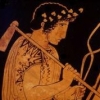
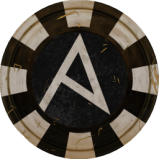
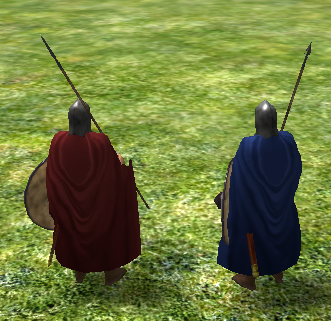
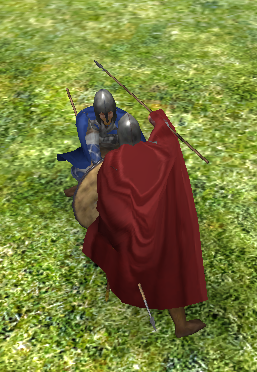
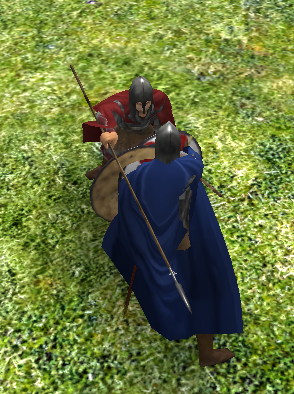
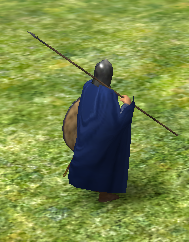


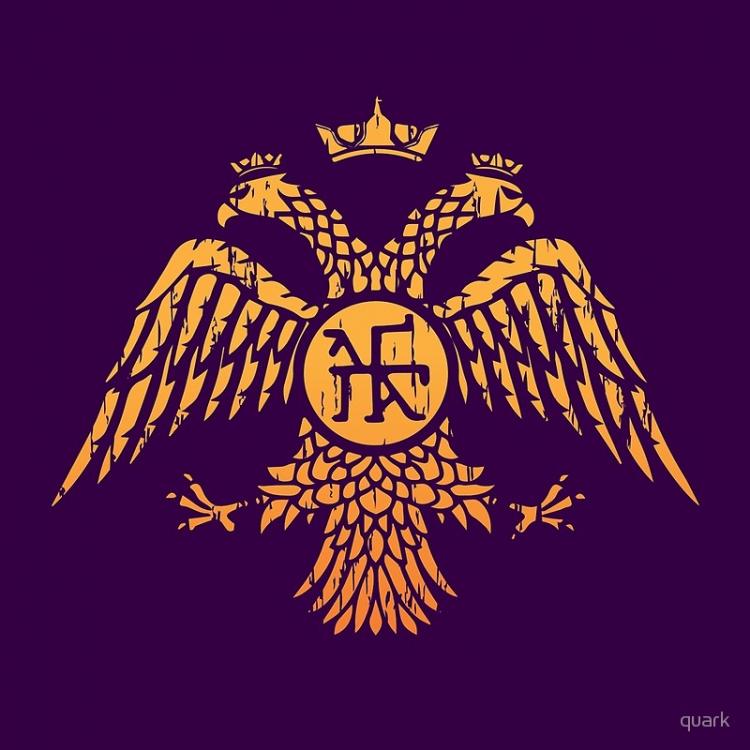
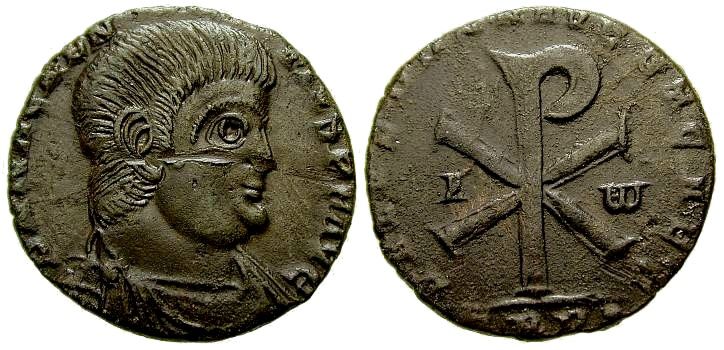
.thumb.jpg.626fc28c175adc35868b77d9d7e49ec4.jpg)
